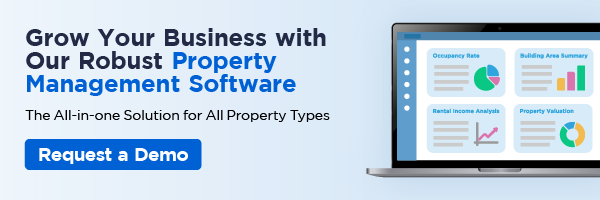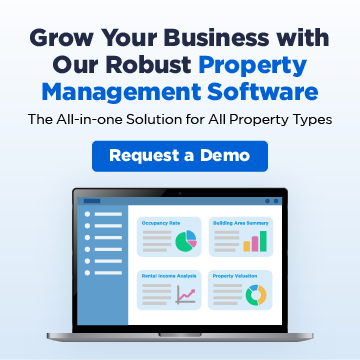Environmental, Social and Governance (ESG) is playing a much more prominent role in a company’s business framework. Today’s companies have understood the importance of embedding ESG considerations into every stage of decision-making, but there are several challenges they encounter while developing and executing their ESG strategy. According to KPMG’s 2022 ESG survey, 57% of respondents cited that “capacity and expertise of resources” is the top challenge their company faces in focusing more closely on ESG, and the second top challenge is “extent of reporting and frameworks to follow”, with “effort to establish effective reporting”, “lack of clarity on regulation” and “cost of effective implementation” taking the third, fourth and fifth places respectively. What makes the situation worse is that ESG issues are constantly evolving, it is challenging for companies to respond quickly to changing circumstances and emerging risks.
The real estate industry is in a leading position when it comes to ESG issues. According to Hong Kong’s Climate Action Plan 2030+, buildings account for about 90% of electricity consumption and 60% greenhouse gas emissions in Hong Kong. Although ESG adoption is still at an early stage in Asia-Pacific, it is undeniable that ESG factors can not be overlooked in some shape or form. In fact, real estate companies that embrace ESG integration and properly tackle ESG challenges are more likely to increase their profitability and business resilience.
1. Keeping up with ever-changing compliance regulations
ESG disclosure regulations have not been standardized and globalized nowadays, companies are often free to decide whether to report depending on which choice of standards they take account of. The lack of standardization in the ESG data landscape, and the fundamental lack of consistency on ESG definitions result in changing regulations, requiring organizations to stay on top of and adapt to the latest ESG regulations – the biggest challenges in addressing ESG issues.
2. ESG talent shortages
ESG considerations are moving to centre stage. Integrating ESG factors into an organization’s decision-making process requires talents who have expertise in ESG reporting, data, and metrics. According to an article by the South China Morning Post (SCMP), a “bidding war” has been breaking out among companies in Hong Kong over senior and mid-level managers who have ESG expertise. As ESG has developed quickly, the rising demand for ESG talents exceeds the supply, leading to a noticeable shortage of ESG experts, even a talent war as companies strives to reach their ESG goals, and for sure, to meet ever-evolving ESG disclosure requirements that will make mandatory in the coming future.
3. Collecting and tracking ESG data
Given the aforesaid lack of standardized and ever-evolving ESG standards, it is challenging for companies to decide what data they need to collect and exploit. On the other hand, the process of data collection and analytics is also a pressing issue as it involves several aspects and parties of a company, efforts need to be made to engage and align with different parties and departments. Moreover, due to legacy technologies, and a shortage of ESG data expertise, the quantity and quality of ESG data collected can be inconsistent, resulting in a lack of accuracy and transparency of ESG reports, which might even lead to an accusation of “green-washing”.
4. Identifying materiality
A materiality assessment can show which issues are the most important to a company’s business and stakeholders. Material ESG issues vary regarding the company’s business nature, corporate strategy, location, community expectations, and so on. However, effectively evaluating materiality is a time-consuming process as it involves three key areas: the information scope, stakeholders, and time frame, which will define the boundaries of materiality decisions. Incorporating stakeholder views and reviewing issues that are not considered before across the value chain are the key challenges to identify material topics.
5. Engaging with stakeholders
Although you have ESG talents placed in the right place alongside initiatives and tools you could still fail to meet your ESG goals, just because not all stakeholders are engaged, including board of executives, shareholders and employees. Clear communication among stakeholders is the most important factor in executing ESG strategies.
Solutions to address ESG challenges
1. Nurture ESG Talent
Winning the talent war for ESG expertise is not easy. As the saying goes, “All roads lead to Rome”, you can nurture ESG talent by upskilling your existing employees with ESG training programs. Not only is upskilling your current staff in ESG cost-effective, it is also a future-proof strategy to foster loyalty among existing talents. Moreover, existing employees are familiar with their company’s value and operations, it can help the company bridge the ESG skills gap quickly.
2. Communicate with and engage stakeholders
Nowadays, Companies are not only judged by their profitability but also their business impact on the environment and society, and it is driven by internal and external stakeholders like employees, customers, shareholders, suppliers and the wider communities. Ensuring high levels of stakeholder engagement, for example, considering all stakeholders’ perspectives, and incorporating their input into the decision-making process, can foster a sense of trust, respect, and transparency, building long-term relationships with them. Positive stakeholder relationships can lead to a more sustainable and resilient business.
3. Technology Will Be A Game Changer
Regardless of industry and company size, embracing technology like Generative-AI and business software solutions can lay a foundation for long-term success. Technology can be leveraged in diverse ways to optimize HR processes, including recruitment, onboarding and training, employee satisfaction and retention. For Example, ERP software gathers, analyzes HR data to help HR managers make faster and more informed decisions that will boost employee satisfaction and productivity.
GaiaPM, a member of the FlexSystem Group, provides international lease and property management software designed to help you drive performance up and costs down. As a global solutions provider in over 38 countries GaiaPM, together with its proven solutions for multi-currency financials, human resources, and operations, is a business software vendor to 1 in 10 Forbes Global 2000 (May 2020), and 1 in 5 Global Fortune 500 (August 2020), operating at the intersection of new digital process and payment technologies, whether on-premise, hybrid or cloud, to provide you with iterative opportunities for value creation.





